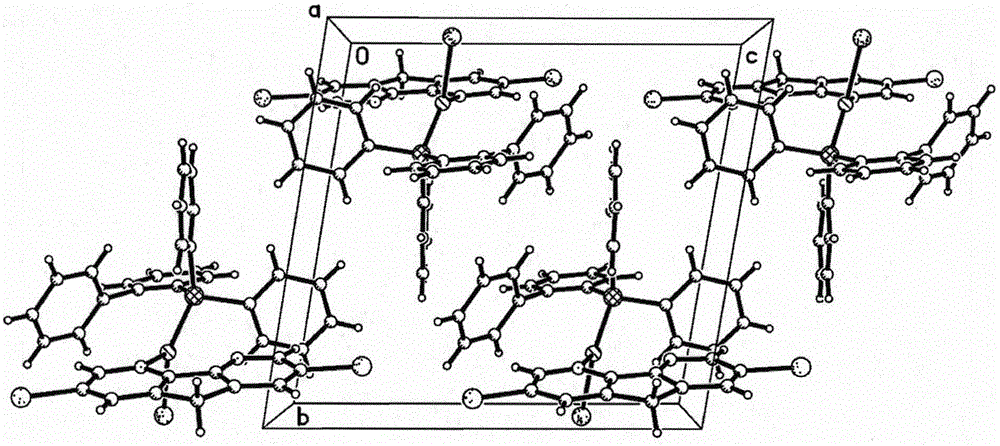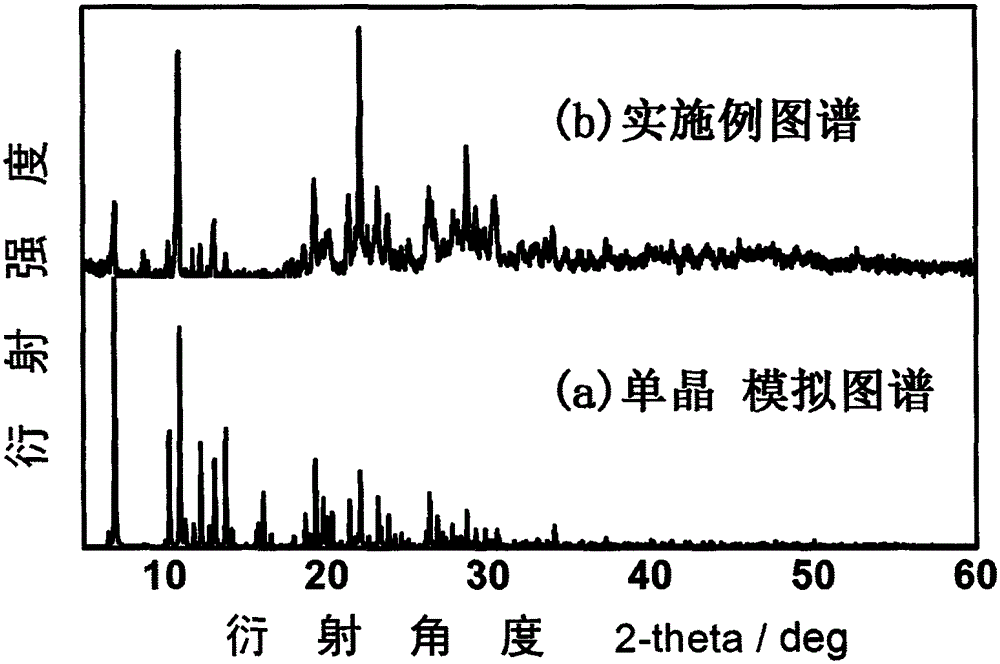Dibromo substituted azafluorene-based CuINP three coordinate type cuprous complex light emitting material
A luminescent material and three-coordination technology, applied in the field of luminescent materials and organic electroluminescent materials, can solve the problems of unsatisfactory and limited excitation state distortion suppression, and luminous efficiency does not meet the application requirements, and achieve good phosphorescence emission performance. , The equipment is simple, and the effect of promoting the crossing between departments
- Summary
- Abstract
- Description
- Claims
- Application Information
AI Technical Summary
Problems solved by technology
Method used
Image
Examples
Embodiment 1
[0030] A large number of phosphorescent complexes CuI(DPPBP)(DBDAF)·2H 2 Preparation of O microcrystalline sample: Weigh 0.5 mmol of CuI and dissolve it in 25 mL of acetonitrile, weigh 0.5 mmol of bis(diphenylphosphine) biphenyl ligand and dissolve it in 15 mL of chloroform, mix these two solutions, and stir Let it fully undergo a coordination reaction to obtain a colorless solution A; then weigh 0.5 mmol of 2,7-dibromo-4,5-diazafluorene ligand and dissolve it in 15 mL of chloroform, and then add this solution to the above solution A and stirring to make the coordination reaction fully occur, and finally the obtained orange-red reaction solution was rotary evaporated to remove all solvents, and dried in vacuum to obtain orange needle-shaped fine crystal powder as the product, with a yield of 95% (calculated as Cu). Elemental Analysis Calculated (C35H25N2PO2CuBr2I): C, 47.40%; H, 2.84%; N, 3.16%. Experimental values: C, 47.84%; H, 2.84%; N, 2.98%. IR (KBr pellet, cm -1 ): 34...
Embodiment 2
[0032] Synthesis of Phosphorescent Cuprous Complex CuI(DPPBP)(DBDAF)·2H 2 Single crystal of O: Dissolve CuI (0.010 g, 0.05 mmol) in 3 ml of acetonitrile, ligand 2,7-dibromo-4,5-diazafluorene (0.033 g, 0.1 mmol) and bis(diphenyl Phosphine)biphenyl (0.035g, 0.1mmol) was dissolved in 5ml of chloroform, after it was completely dissolved, the two were mixed, stirred rapidly for 5min, and then filtered to obtain an orange-red clear solution. The filtrate was placed in a 25ml beaker, covered with a plastic wrap, pierced with a needle and crystallized by volatilization. Orange needle-like crystals were obtained in about 5 days. An orange needle-like transparent crystal with a size of 0.35mm×0.26mm×0.10mm was selected for X-ray single crystal diffraction structure test. The molecular structure of the compound is shown in the attached figure 1 , and its unit cell packing structure is shown in the attached figure 2 .
[0033] p-phosphorescent cuprous complex CuI(DPPBP)(DBDAF)·2H 2...
PUM
| Property | Measurement | Unit |
|---|---|---|
| luminous efficiency | aaaaa | aaaaa |
Abstract
Description
Claims
Application Information
 Login to View More
Login to View More - R&D
- Intellectual Property
- Life Sciences
- Materials
- Tech Scout
- Unparalleled Data Quality
- Higher Quality Content
- 60% Fewer Hallucinations
Browse by: Latest US Patents, China's latest patents, Technical Efficacy Thesaurus, Application Domain, Technology Topic, Popular Technical Reports.
© 2025 PatSnap. All rights reserved.Legal|Privacy policy|Modern Slavery Act Transparency Statement|Sitemap|About US| Contact US: help@patsnap.com



